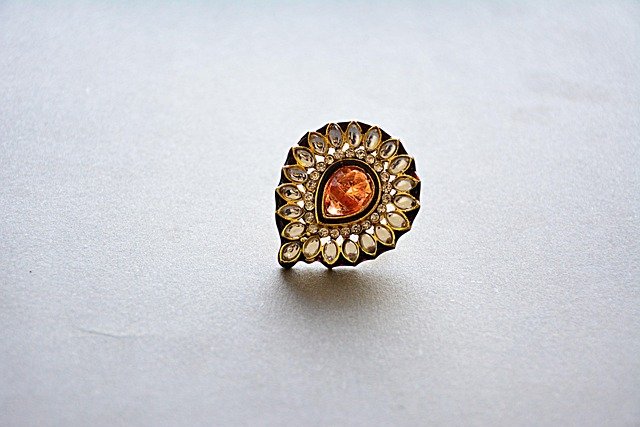Antique Rings: A Journey Through Time and Craftsmanship
Antique rings are more than just jewelry; they are tangible pieces of history that have adorned fingers for generations. These precious artifacts offer a glimpse into the artistry, cultural values, and technological advancements of bygone eras. From intricate filigree work to bold gemstone settings, antique rings showcase the evolution of jewelry design and craftsmanship over the centuries.

How have different eras shaped antique ring designs?
The design of antique rings has been heavily influenced by the historical periods in which they were created. The Georgian era (1714-1837) saw the rise of nature-inspired motifs, with delicate floral patterns and leaf designs adorning rings. During the Victorian era (1837-1901), sentimental jewelry became popular, with rings featuring symbolic elements like hearts, birds, and snakes representing love and eternity.
The Edwardian period (1901-1910) brought about a shift towards more delicate and feminine designs, with platinum becoming the metal of choice for its strength and malleability. Art Nouveau (1890-1910) rings showcased flowing, organic forms and often incorporated unconventional materials like glass and horn. The subsequent Art Deco period (1920-1935) marked a dramatic change, with geometric shapes and bold color combinations taking center stage in ring designs.
What unique craftsmanship sets antique rings apart?
Antique rings are distinguished by their exceptional craftsmanship, often featuring techniques that are rarely used in modern jewelry production. Hand engraving, for instance, was a common practice that added intricate details to metal surfaces, creating depth and texture. Filigree work, involving delicate metalwork with tiny beads or twisted threads, was another hallmark of antique ring craftsmanship.
The use of rose-cut and old-mine-cut diamonds, which differ from modern cutting techniques, gives antique rings a unique sparkle and character. These cuts were designed to maximize the stone’s beauty under candlelight, resulting in a softer, more romantic glow. Additionally, many antique rings feature hand-fabricated settings, where each element was carefully crafted and assembled by skilled artisans, ensuring a level of quality and uniqueness that is hard to replicate with modern mass-production methods.
What styles and detailing are often seen in antique jewelry?
Antique jewelry is renowned for its rich variety of styles and intricate detailing. Cluster rings, featuring a central stone surrounded by smaller gems, were popular across various eras. Halo settings, where a ring of small diamonds encircles a center stone, became fashionable during the Art Deco period and continue to be admired today.
Enameling was another technique frequently employed in antique rings, adding vibrant colors and intricate patterns to metal surfaces. Milgrain detailing, characterized by tiny beads or spheres along the edges of the metal, provided a delicate, lace-like appearance to ring designs. Carved gemstones, known as intaglios or cameos, were often incorporated into rings, depicting portraits or scenes with exquisite detail.
How can one identify authentic antique rings?
Identifying authentic antique rings requires a keen eye and some knowledge of historical jewelry-making techniques. One key indicator is the presence of wear consistent with the ring’s purported age. Genuine antique rings often show signs of gentle use, such as slight unevenness in the band or softened edges on engraved details.
The materials used can also provide clues to a ring’s authenticity. For instance, platinum was not widely used in jewelry before the early 20th century, so a ring claiming to be from the Victorian era should not be made of platinum. The cutting style of gemstones is another important factor; old-mine-cut or rose-cut diamonds are indicative of antique origins, as these cuts are rarely used in modern jewelry production.
What factors influence the value of antique rings?
The value of antique rings is determined by a combination of factors, including age, rarity, condition, and historical significance. Rings from certain periods or those associated with notable historical figures or events can command premium prices. The quality and rarity of gemstones used also play a significant role in valuation, with some antique cuts being particularly sought after by collectors.
Craftsmanship is another crucial factor in determining an antique ring’s worth. Rings featuring exceptional hand engraving, intricate filigree work, or other labor-intensive techniques are often more valuable. The overall condition of the ring is also important; while some signs of wear are expected and can authenticate a piece, excessive damage can significantly decrease its value.
Antique rings offer a unique blend of historical significance, artistic beauty, and craftsmanship that continues to captivate jewelry enthusiasts and collectors alike. These timeless pieces not only serve as stunning accessories but also as tangible connections to the past, each with its own story to tell. Whether admired for their intricate designs, valued for their historical importance, or cherished as family heirlooms, antique rings remain enduring symbols of artistry and elegance across generations.




